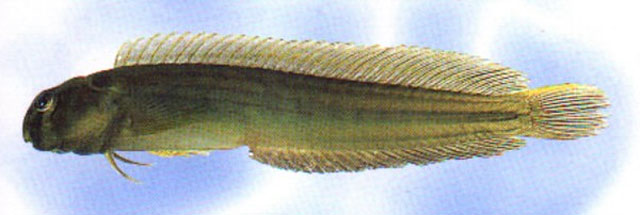| Blenniidae (Combtooth blennies), subfamily: Blenniinae |
| 8 cm TL (male/unsexed) |
|
reef-associated; marine; depth range 0 - 3 m |
| Western Pacific: Taiwan and Hong Kong to New Caledonia (Ref. 40966). |
|
Dorsal spines (total): 12-14; Dorsal soft rays (total): 18-23; Anal spines: 2-2; Anal soft rays: 21-26. Head with wavy vertical lines, pale-rimmed dark spot just behind eye, oblique brownish bands, and curved white lines on side. Dorsal rays usually XIII, fin slightly notched between spinous and soft portions; 3 mandibular pores on each side; gill opening extending ventrally from slightly above pectoral-fin base to opposite 6th pectoral ray; head crest and cirri absent; last dorsal and anal rays attached by membrane to caudal fin; body depth about 5.8 in SL. Maximum size to 7.8 cm TL (Ref. 90102). |
| Adults inhabit shallow reefs, in crevices just below level of low tide (Ref. 36661). Found in tidepools and rocky shores, solitary or in small groups (Ref. 90102). Oviparous. Eggs are demersal and adhesive (Ref. 205), and are attached to the substrate via a filamentous, adhesive pad or pedestal (Ref. 94114). Larvae are planktonic, often found in shallow, coastal waters (Ref. 94114). |
|
Least Concern (LC); Date assessed: 27 March 2009 Ref. (130435)
|
| harmless |
Source and more info: www.fishbase.org. For personal, classroom, and other internal use only. Not for publication.

